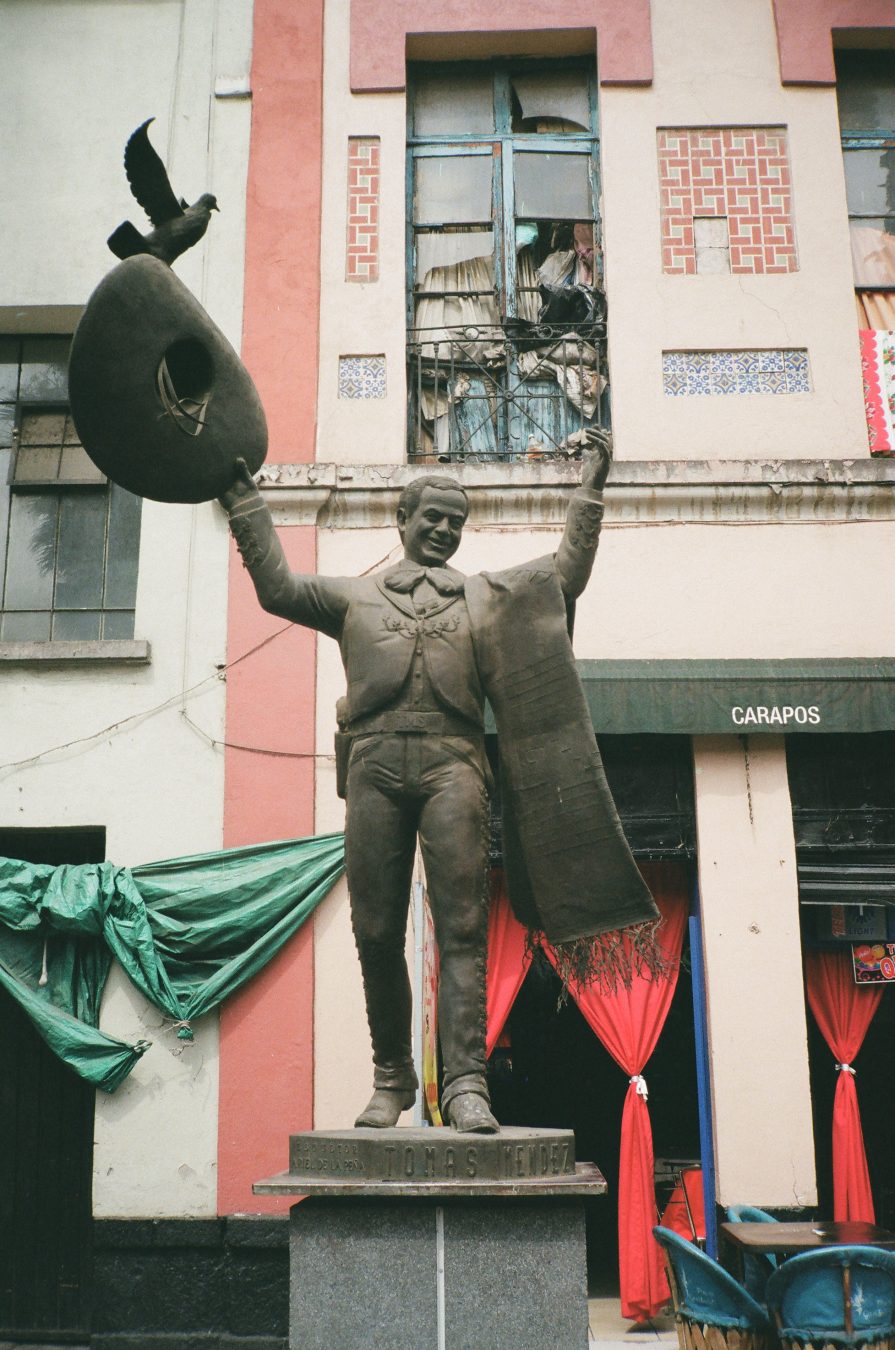Sandwiched between the barrio of Tepito and the chaotic centre of Mexico City is Plaza Garibaldi, famously known as the gathering place of hundreds of mariachi players.
I find Plaza Garibaldi to be a bit of an odd sight, a kind of anomaly. On the road in front of the plaza, one member from each mariachi group stands by the passing cars, trying to flag people who might hire them for a gig. Although a competition, the ritual is done calmly, and the musicians respect one another’s space.
During their downtime throughout the day, the mariachi players eat tacos and ice cream and sit in the shade. They get their shoes polished and wait to see who they can serenade. Nighttime is when the plaza becomes wild—especially on the weekend. Locals come to Garibaldi to smoke, laugh, and sing along to their favourite songs. It seems just about everyone knows the words. They sway back and forth as their hired mariachi play for them.

Originated in the state of Jalisco and reportedly brought to Mexico City at the turn of the 20th century, mariachi is Mexican folk music traditionally played using the violin, trumpet, vihuela (round-backed guitar), and guitarron (large bass guitar). The lyrics are belted out, full of emotion and heartbreak. It’s a tradition that embodies romance, elegance, and pride—a tradition these musicians have kept alive since the establishment of Plaza Garibaldi in the 1920s, and through the peak of the golden age of Mexican cinema from the ‘30s to the ‘50s. It was a glittering time during which mariachi’s popularity reached its peak. The films had men ride on their horses, wearing charro clothing (sombrero, embroidered jacket, and trousers) while singing to the ladies. Today there are also mariachi groups made up of women.
Each time I ask a musician when he started playing, the response is the same: “When I was born.” “Since day one.” They use the word “descendant” a lot, as their fathers and grandfathers were mariachi players, too, and their own children will likely be one day.

Many of the musicians who I encounter have been working at the plaza for over 30 years. I ask several of them what has changed since they started out. “I have grey hair now,” a short man replies in Spanish. “And I’ve gotten taller.”
No one I speak to recognizes a change, or maybe they just don’t want to acknowledge one. However, there is no doubt that modernity has made its impact on mariachi. The elegance has disappeared, the costumes don’t have the same quality, and the plaza has been cleaned up due to an increase of crime. In the past, the most famous artists in Mexico were part of the mariachi community. There might be less glamour now, but that doesn’t stop the hundreds of artists from keeping this tradition—which has come to represent Mexico around the world—from vanishing into the past.

Read more from Travel.






















